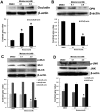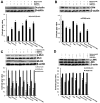Melatonin inhibits the migration of human lung adenocarcinoma A549 cell lines involving JNK/MAPK pathway
- PMID: 24992189
- PMCID: PMC4084631
- DOI: 10.1371/journal.pone.0101132
Melatonin inhibits the migration of human lung adenocarcinoma A549 cell lines involving JNK/MAPK pathway
Abstract
Objective: Melatonin, an indolamine produced and secreted predominately by the pineal gland, exhibits a variety of physiological functions, possesses antioxidant and antitumor properties. But, the mechanisms for the anti-cancer effects are unknown. The present study explored the effects of melatonin on the migration of human lung adenocarcinoma A549 cells and its mechanism.
Methods: MTT assay was employed to measure the viability of A549 cells treated with different concentrations of melatonin. The effect of melatonin on the migration of A549 cells was analyzed by wound healing assay. Occludin location was observed by immunofluorescence. The expression of occludin, osteopontin (OPN), myosin light chain kinase (MLCK) and phosphorylation of myosin light chain (MLC), JNK were detected by western blots.
Results: After A549 cells were treated with melatonin, the viability and migration of the cells were inhibited significantly. The relative migration rate of A549 cells treated with melatonin was only about 20% at 24 h. The expression level of OPN, MLCK and phosphorylation of MLC of A549 cells were reduced, while the expression of occludin was conversely elevated, and occludin located on the cell surface was obviously increased. The phosphorylation status of JNK in A549 cells was also reduced when cells were treated by melatonin.
Conclusions: Melatonin significantly inhibits the migration of A549 cells, and this may be associated with the down-regulation of the expression of OPN, MLCK, phosphorylation of MLC, and up-regulation of the expression of occludin involving JNK/MAPK pathway.
Conflict of interest statement
Figures





Similar articles
-
Melatonin inhibits colon cancer RKO cell migration by downregulating Rho‑associated protein kinase expression via the p38/MAPK signaling pathway.Mol Med Rep. 2017 Dec;16(6):9383-9392. doi: 10.3892/mmr.2017.7836. Epub 2017 Oct 19. Mol Med Rep. 2017. PMID: 29152648 Free PMC article.
-
A novel all-trans retinoid acid derivative N-(3-trifluoromethyl- phenyl)- retinamide inhibits lung adenocarcinoma A549 cell migration through down-regulating expression of myosin light chain kinase.Asian Pac J Cancer Prev. 2014;15(18):7687-92. doi: 10.7314/apjcp.2014.15.18.7687. Asian Pac J Cancer Prev. 2014. PMID: 25292047
-
Melatonin inhibits the Migration of Colon Cancer RKO cells by Down-regulating Myosin Light Chain Kinase Expression through Cross-talk with p38 MAPK.Asian Pac J Cancer Prev. 2015;16(14):5835-42. doi: 10.7314/apjcp.2015.16.14.5835. Asian Pac J Cancer Prev. 2015. PMID: 26320459
-
New insights into 4-amino-2-tri-fluoromethyl-phenyl ester inhibition of cell growth and migration in the A549 lung adenocarcinoma cell line.Asian Pac J Cancer Prev. 2013;14(12):7265-70. doi: 10.7314/apjcp.2013.14.12.7265. Asian Pac J Cancer Prev. 2013. PMID: 24460286
-
Melatonin and its ubiquitous anticancer effects.Mol Cell Biochem. 2019 Dec;462(1-2):133-155. doi: 10.1007/s11010-019-03617-5. Epub 2019 Aug 26. Mol Cell Biochem. 2019. PMID: 31451998 Review.
Cited by
-
Unveiling the Protective Role of Melatonin in Osteosarcoma: Current Knowledge and Limitations.Biomolecules. 2024 Jan 24;14(2):145. doi: 10.3390/biom14020145. Biomolecules. 2024. PMID: 38397382 Free PMC article. Review.
-
Melatonin as a potential anticarcinogen for non-small-cell lung cancer.Oncotarget. 2016 Jul 19;7(29):46768-46784. doi: 10.18632/oncotarget.8776. Oncotarget. 2016. PMID: 27102150 Free PMC article. Review.
-
Mechanisms Underlying Tumor Suppressive Properties of Melatonin.Int J Mol Sci. 2018 Jul 27;19(8):2205. doi: 10.3390/ijms19082205. Int J Mol Sci. 2018. PMID: 30060531 Free PMC article. Review.
-
Melatonin inhibits colon cancer RKO cell migration by downregulating Rho‑associated protein kinase expression via the p38/MAPK signaling pathway.Mol Med Rep. 2017 Dec;16(6):9383-9392. doi: 10.3892/mmr.2017.7836. Epub 2017 Oct 19. Mol Med Rep. 2017. PMID: 29152648 Free PMC article.
-
Melatonin, an Antitumor Necrosis Factor Therapy.J Pineal Res. 2025 Jan;77(1):e70025. doi: 10.1111/jpi.70025. J Pineal Res. 2025. PMID: 39740227 Free PMC article. Review.
References
-
- Siegel R, Naishadham D, Jemal A (2012) Cancer statistics, 2012. A Cancer Journal for Clinicians 62: 10–29. - PubMed
-
- Petty RD, Nicolson MC, Kerr KM, Collie-Duguid E, Murray GI (2004) Gene expression profiling in non-small cell lung cancer: from molecular mechanisms to clinical application. Clinical Cancer Research 10: 3237–3248. - PubMed
-
- Dziadziuszko R, Hirsch FR (2008) Advances in genomic and proteomic studies of non-small-cell lung cancer: clinical and translational research perspective. Clinical Lung Cancer 9: 78–84. - PubMed
-
- Weight B, Peterse JL, Van’t Veer LJ (2005) Breast cancer metastasis: markers and models. Nature Reviews Cancer 5: 591–602. - PubMed
Publication types
MeSH terms
Substances
LinkOut - more resources
Full Text Sources
Other Literature Sources
Medical
Research Materials

